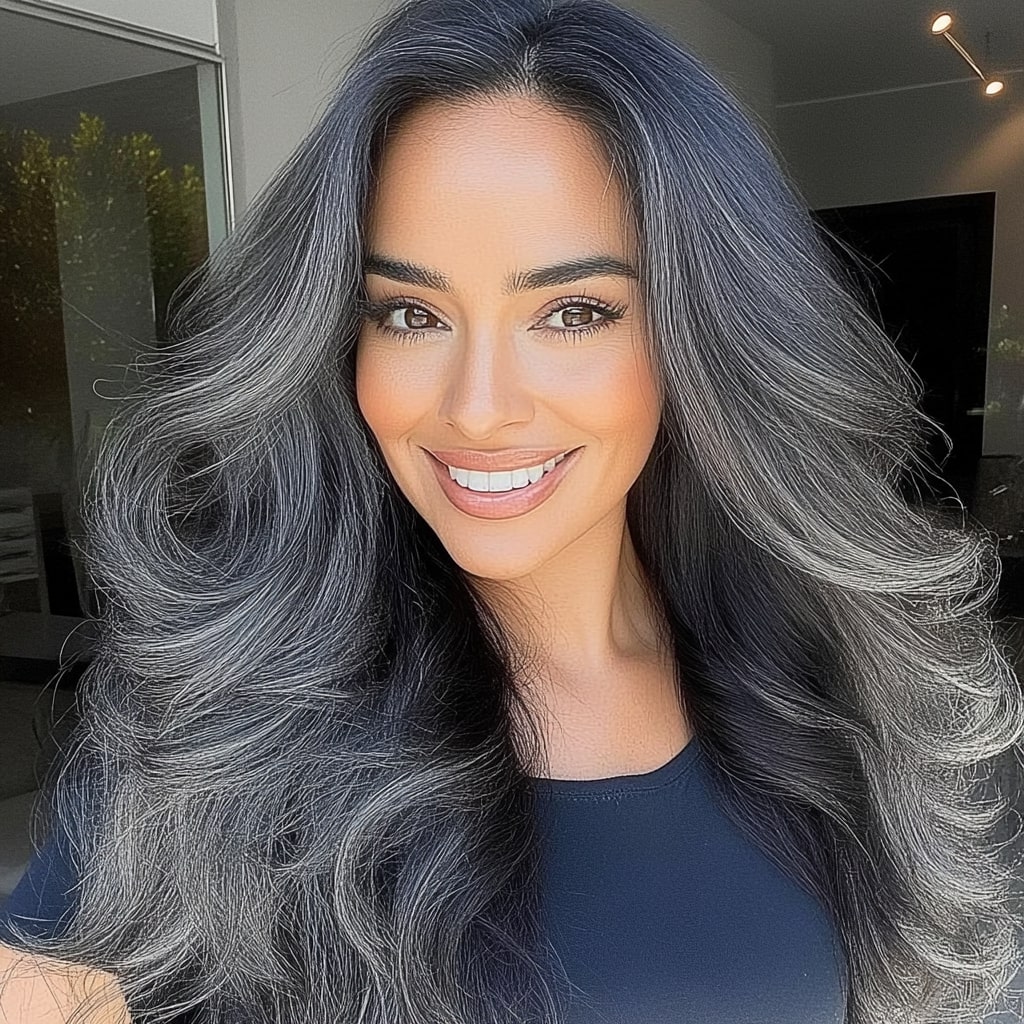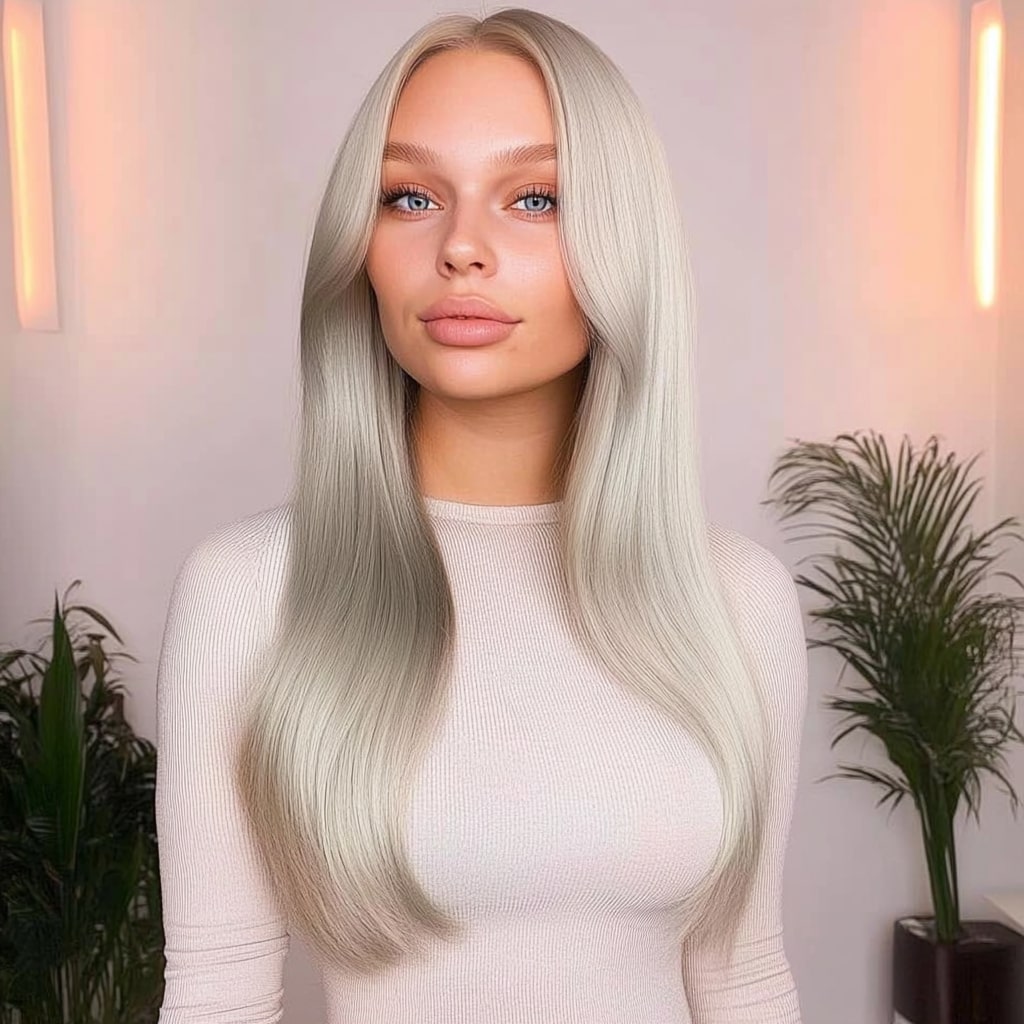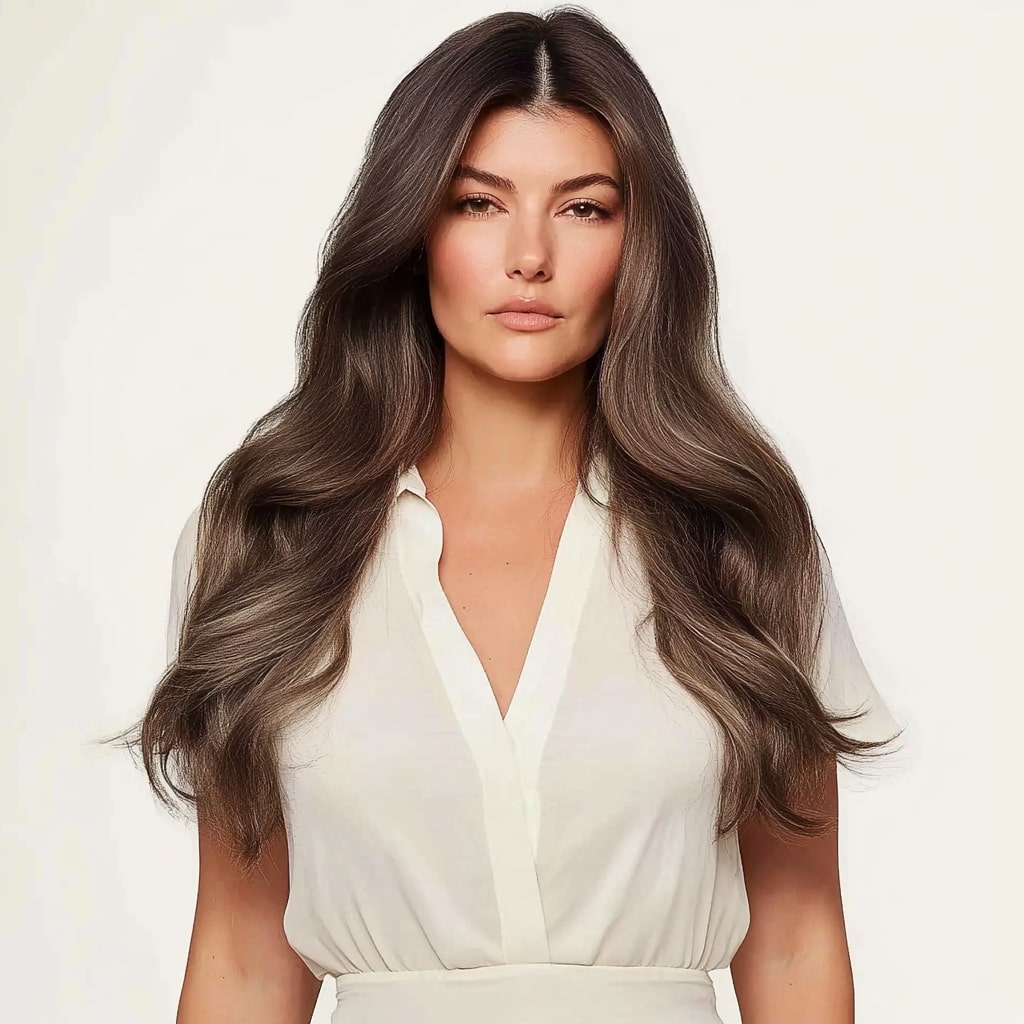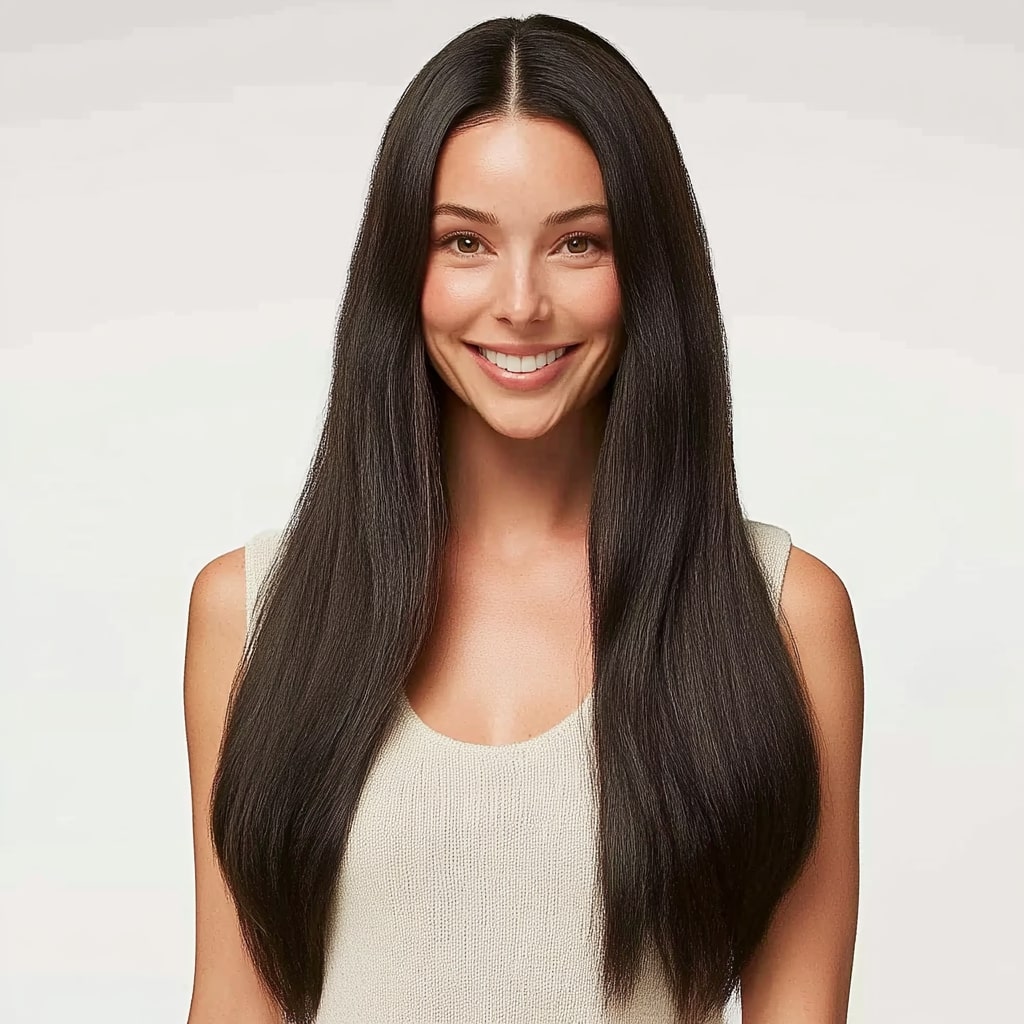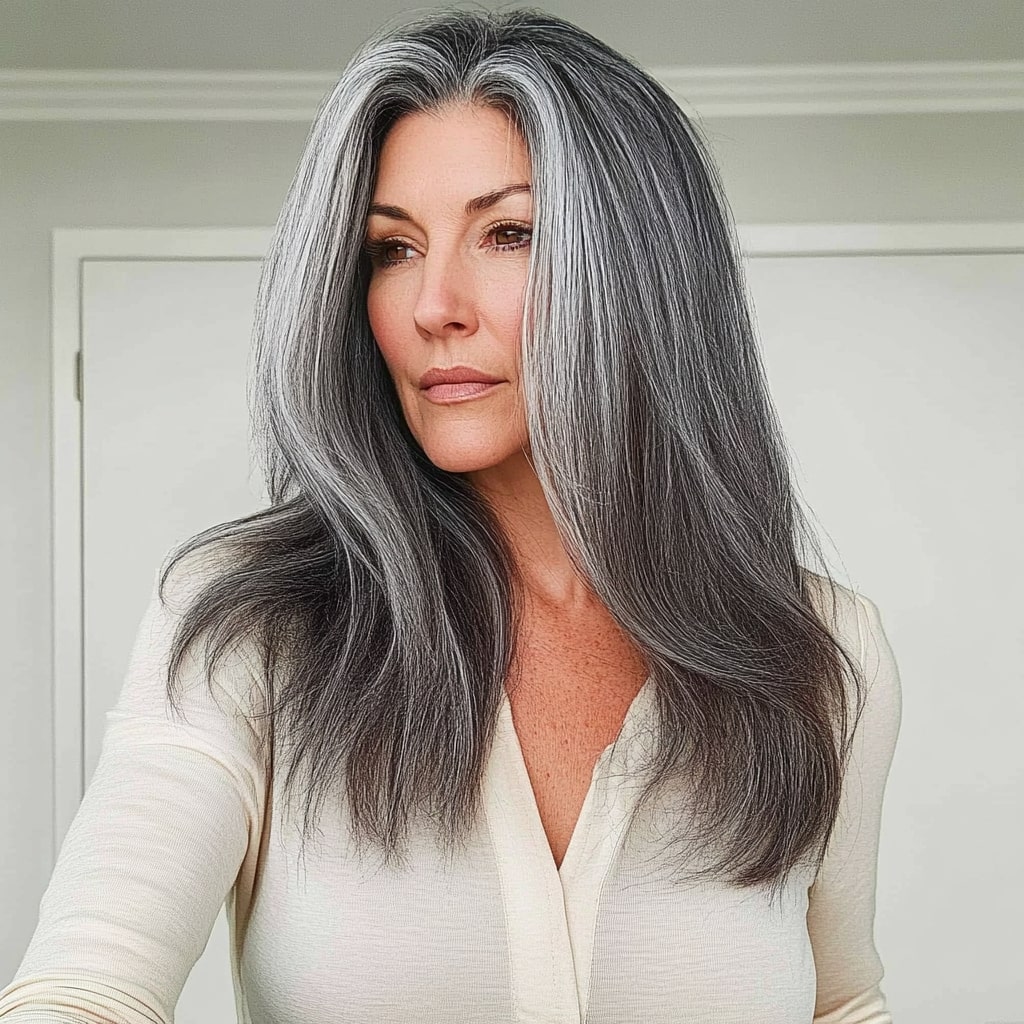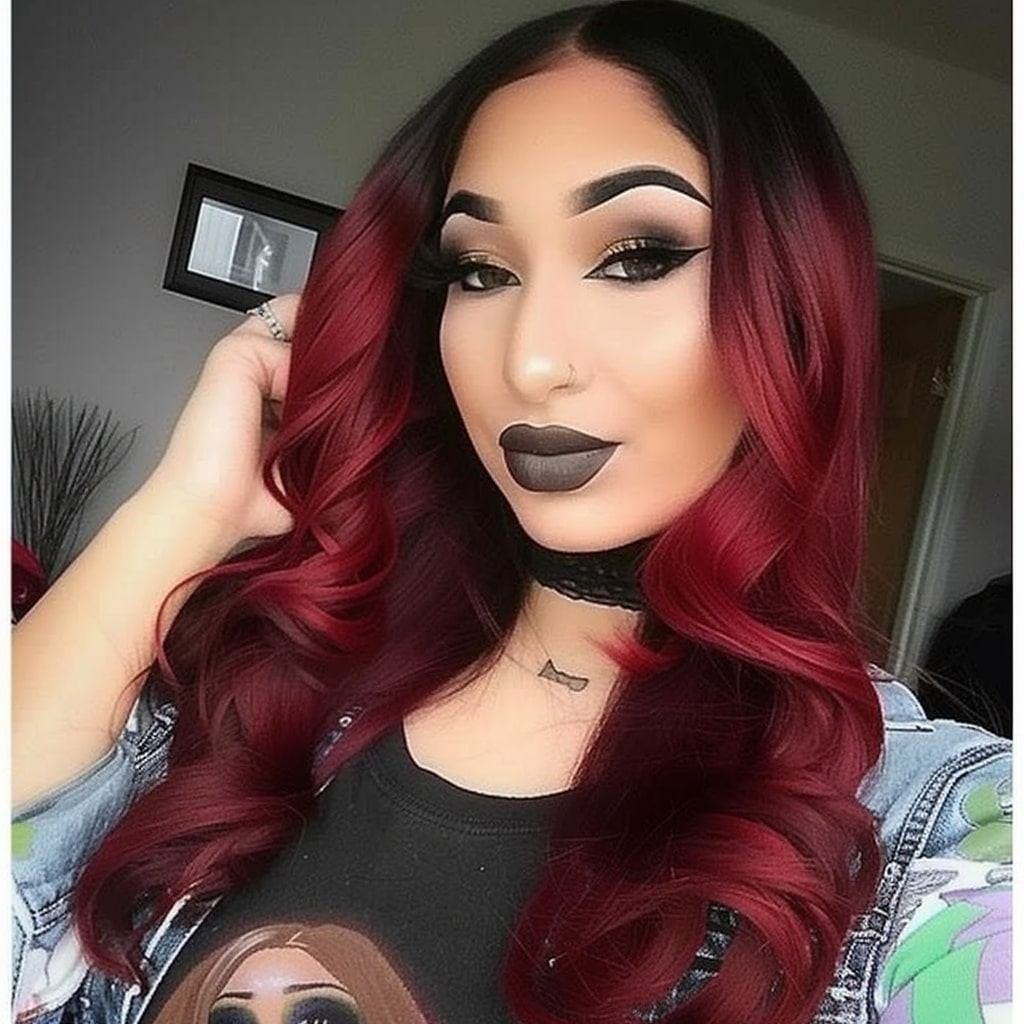Why Are My Hair Extensions Shedding? Causes & Solutions

Are you struggling with hair extensions that shed too much? It's a common issue that can leave you frustrated and worried about the health of your extensions. Shedding often occurs due to rough handling, improper care, or even the quality of the extensions themselves.
Proper handling is crucial. Gentle washing and avoiding rough brushing, especially when wet, can make a big difference. The products used also matter; sulphate-free and alcohol-free shampoos and conditioners are recommended to keep your hair extensions intact and healthy.
Diet and nutrition can also affect hair shedding. Ensuring you get enough vitamins and nutrients like iron and vitamin C can support the health of your extensions. Key nutrients help maintain hair strength and prevent excessive shedding, making your extensions last longer and look better.
Key Takeaways
- Rough handling and improper care can lead to hair extension shedding.
- Using gentle, sulphate-free products helps keep hair extensions healthy.
- Proper nutrition supports overall hair health and reduces shedding.
How to prevent your hair extensions from shedding so much:
-
Choose Premium Extensions: Always start with top-quality hair extensions, such as those from Tara Hair™ and Quality Hair™. High-grade extensions are crafted to minimize shedding, thanks to better materials and production techniques.
-
Expert Installation:
- Have your extensions applied by a skilled hairstylist. Incorrect installation can strain your hair and lead to premature shedding.
- Ensure that the extensions are applied with the right tension. Too much tension can damage your natural hair and increase the likelihood of shedding.
-
Careful Brushing:
- Use a wide-tooth comb or a brush designed specifically for extensions. Begin combing from the tips, moving upward, to gently detangle without causing breakage.
- Make it a habit to brush your extensions daily to prevent knots, which can lead to shedding if not managed properly.
-
Gentle Washing Routine:
- Clean your extensions with sulfate-free and alcohol-free shampoos and conditioners to avoid stripping the hair of its natural moisture.
- Don’t over-wash your extensions. Washing them every 1-2 weeks is typically enough, depending on how much product you use and your lifestyle.
-
Proper Drying Techniques:
- After washing, gently press out excess water using a soft towel. Avoid harsh rubbing, which can cause the hair to weaken and shed.
- Whenever possible, let your extensions air dry. If you need to use a blow dryer, set it to a low heat setting and consider using a diffuser to protect the hair.
-
Minimize Heat Styling:
- Limit the use of heat tools like straighteners and curling irons. Excessive heat can lead to breakage and shedding.
- Always apply a heat protectant spray before using any hot tools on your extensions.
-
Nighttime Care:
- Before bed, tie your hair in a loose braid or ponytail to prevent tangling. Sleeping on a silk or satin pillowcase or wrapping your hair in a silk scarf can also reduce friction and prevent shedding.
-
Use Light Products:
- Avoid using heavy styling products that can cause buildup on your extensions, making them more prone to breakage.
- Opt for lightweight leave-in conditioners or oils that hydrate without adding too much weight to the hair.
-
Regular Maintenance:
- Schedule regular check-ups with your stylist to ensure your extensions remain in good condition and to address any issues before they lead to shedding.
- Depending on the type of extensions, consider having them adjusted or replaced every 6-8 weeks to keep them secure and reduce shedding risks.
-
Environmental Protection:
- Protect your extensions from extreme weather by covering your hair with a hat or scarf when needed. Harsh weather can dry out the hair and increase shedding.
- When swimming, use a swim cap to keep chlorine or saltwater from weakening your extensions and causing shedding.
-
Avoid Chemical Processing:
- Steer clear of coloring, perming, or chemically treating your extensions, as these processes can weaken the hair and lead to shedding. If coloring is necessary, have it done by a professional familiar with extensions.
By following these guidelines and choosing quality extensions like those from Tara Hair™ and Quality Hair™, you can greatly minimize shedding and extend the life of your extensions.
Understanding Hair Extensions and Shedding
Hair extensions can shed for various reasons, often related to both the hair's natural growth cycle and the quality and care of the extensions themselves. Knowing these factors is important for maintaining your extensions.
The Hair Growth Cycle and Extensions
Hair undergoes a natural growth cycle consisting of four stages: anagen (growth), catagen (transitional), telogen (resting), and exogen (shedding). Hair extensions, whether synthetic or human, can disrupt this cycle if not properly cared for.
During the anagen phase, natural hair grows and extends. When extensions are added, they do not enter the anagen phase, meaning they won’t grow but can still shed. Extensions often remain in the catagen and telogen phases. When in the exogen phase, shedding naturally occurs, even for extensions. The improper handling of extensions can accelerate this shedding, especially if the extensions are brushed too harshly or not maintained correctly.
Types of Hair Extensions and Their Propensity for Shedding
The type of hair extension influences how much shedding occurs. There are several types:
-
Synthetic Hair Extensions - These are more prone to tangling and shedding due to their artificial materials. They do not respond well to heat and certain hair products.
-
Human Hair Extensions - These resemble natural hair more closely and tend to shed less if they are high quality. Remy hair, which has the cuticle intact and aligned, sheds less than non-Remy hair.
-
Clip-ins, Tape-ins, and Bonded Extensions - Clip-ins can be more easily removed and replaced, so they might shed less. Tape-ins and bonded extensions can shed more, especially if the adhesive weakens over time.
Regular maintenance such as gentle brushing, proper washing techniques, and using the right care products helps minimize shedding across all types of extensions. Avoid pulling or tugging at the hair, and always use a soft bristle brush or wide-tooth comb.
Common Causes of Hair Extensions Shedding
Hair extensions shedding can be caused by a variety of factors. The quality and type of hair used, how the extensions are attached, and the maintenance and hair care routine all play a role.
Quality and Type of Hair Used
The type and quality of hair are crucial. Human hair extensions often last longer and shed less than synthetic ones. Among human hair, Remy hair is preferred as it retains the natural direction of hair cuticles, reducing tangling and shedding.
Low-quality hair tends to break and shed more easily. Ensuring that the extensions are made from high-quality, ethically sourced hair can minimize shedding. Synthetic hair can be more prone to tangling and shedding because it lacks the natural structure of human hair.
Attachment Techniques
Attachment methods significantly impact the amount of shedding. Clip-in extensions might shed less since they are only worn temporarily, whereas permanent options like tape-ins or wefts might need more careful handling.
If the installation process involves heat or glue, improper technique can weaken the hair shaft, leading to more shedding. Professional installation ensures that attachments are secure but not too tight, which could damage the natural hair and cause breakage.
Proper attachment can help maintain the integrity of both the extensions and natural hair.
Maintenance and Hair Care Routine
Regular and gentle maintenance of hair extensions is critical to reducing shedding. Brushing extensions carefully with a special brush designed for wigs or extensions can prevent excess hair loss.
Using sulfate-free shampoo and conditioner helps maintain the integrity of the extensions. Avoid shampooing too frequently as it can strip hair of natural oils. Instead, focus on using moisturizing treatments and oils to keep the extensions hydrated.
Avoid using heavy products that can weigh down the extensions and cause them to slip out or shed more. Proper styling techniques involve avoiding excessive heat and using heat protectants to minimize damage. Keeping up a routine that mimics the care for natural hair can greatly reduce shedding.
External Factors Influencing Shedding
Several external factors can affect how much your hair extensions shed. These include diet and nutrition, stress and hormonal changes, and environmental stress.
Effects of Diet and Nutrition on Hair Health
Your diet plays a significant role in the health of your hair. A balanced diet with sufficient protein is essential as hair is primarily made of protein. Vitamins and minerals such as iron, zinc, and vitamins D, A, and E are crucial for hair growth and strength.
For instance, a deficiency in iron can lead to more hair fall. Eating foods like spinach, nuts, and fish can help. Additionally, a lack of fatty acids can make hair brittle and prone to shedding, so integrating foods like avocados and seeds into your diet is beneficial.
Impact of Stress and Hormonal Changes
Stress can significantly impact hair health. High stress levels can force hair follicles into a resting phase, leading to increased shedding. Managing stress through meditation, exercise, and adequate sleep can reduce this effect.
Hormonal changes also affect hair shedding. Pregnancy and menopause are times when hormonal fluctuations can lead to more significant hair loss. During these periods, maintaining a nutritious diet and consulting with a healthcare provider can help manage the changes.
Environmental Stress and Hair Damage
Environmental factors can contribute to hair damage and increased shedding. Pollution and UV exposure can weaken hair strands, making them more prone to falling out. Wearing hats or using UV-protective sprays can minimize this damage.
Dry climates and extreme weather can also lead to hair shedding. Keeping hair hydrated with the right products and avoiding excessive heat styling helps maintain hair health. Environmental stressors are often unavoidable, but taking proactive steps can mitigate their adverse effects.
Prevention and Remedies for Hair Extensions Shedding
To reduce hair extensions shedding, it is important to focus on proper installation and care techniques. This guide will highlight key practices that help maintain extensions in good condition.
Proper Installation and Care Techniques
Installing hair extensions correctly is vital. Consulting a professional ensures the extensions are suited to hair texture and evenly distributed. This minimizes stress on natural hair and prevents shedding.
Daily care is also crucial. Gentle brushing reduces tangling and loss. Use a special extension brush, starting from the nape and moving downward. Avoid rough handling, especially when wet.
Washing techniques matter too. Use sulfate-free shampoos and conditioners to avoid harsh chemicals. Be gentle while washing to prevent pulling.
Maintain the extensions by avoiding heat styling tools and opting for protective hairstyles like braids. Hair masks and supplements like biotin and collagen support hair health, reducing shedding.
Through these practices, maintaining durable and lush extensions becomes achievable.
Frequently Asked Questions

Hair extensions can shed for various reasons, but proper care and maintenance can minimize this issue. Using the right products and techniques can help keep hair extensions secure and reduce fallout.
How can shedding of hair extensions be prevented?
Shedding can be prevented by handling extensions gently. When washing, avoid pulling or tugging. Use a wide-tooth comb on dry hair and avoid brushing when wet. Follow care instructions provided by the manufacturer or stylist carefully.
Is shedding a common issue with hair extensions?
Yes, some shedding is normal with hair extensions. Over time, the strands can loosen from the attachment points. Quality and type of hair, such as human or synthetic, can affect how much shedding occurs.
What might be causing a significant loss of my hair extension strands?
Improper installation or heavy extensions may cause significant shedding. Assessing the hair type and consulting a professional can help prevent this. Ensuring proper weight distribution is crucial to minimize shedding.
What are effective methods to secure hair extensions and minimize fallout?
Using the right attachment method is key. Different methods like tape-ins, sew-ins, or micro-links require specific care. Avoid excessive heat and chemical treatments. Regular maintenance by a professional can keep extensions secure and minimize fallout.
Can certain products or treatments reduce the shedding of hair extensions?
Yes, using gentle shampoos and conditioners made for extensions can help. Avoid products with sulphates and alcohol, as these can damage the hair. Treatments like leave-in conditioners and heat protectants can also reduce shedding.
What maintenance practices should be followed to ensure hair extensions remain intact?
Brush extensions daily with a gentle brush. Wash them every 1-2 weeks with appropriate products. Avoid sleeping with wet hair and use a silk pillowcase to reduce friction. Regular salon visits for maintenance can ensure the longevity of extensions.

 My Store Credit
My Store Credit
 Buy Again
Buy Again
